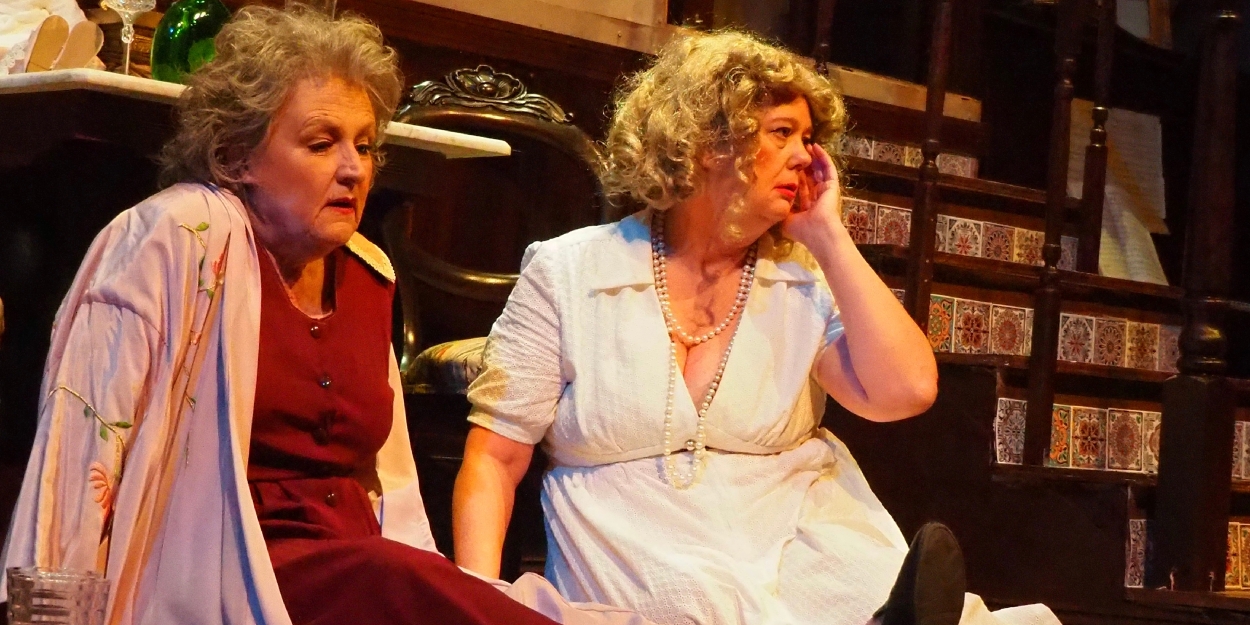Interview: Michael Hammond talks adapting BABY JANE for the stage at The Company Theatre
Stage version of classic film will be in Norwell through October 27


If you’re a fan of the 1962 feature film “Whatever Happened to Baby Jane?” and eager to learn more about the story that inspired the cult classic, then you may want to head to The Company Theatre in Norwell, now through October 27, for “Baby Jane.”
Adapted for the stage and being directed by Michael Hammond, TCT’s Managing Director of Development and a popular local performer, “Baby Jane” is based on the 1960 Henry Farrell novel that inspired the movie and shares its name. Set in a once-grand Hollywood mansion, the story concerns an aging former child star who delights in tormenting her wheelchair-bound sister, also a faded movie star.
Starring Bette Davis as “Baby Jane” Hudson and Joan Crawford as Blanche Hudson, and directed by Robert Aldrich, the film was released 62 years ago this month. Heavily promoted by its stars, it became a box office hit and went on to receive five Academy Award nominations, including the tenth and final for Davis as Best Actress. Victor Buono, who played Jane’s sad-sack accompanist Edwin Flagg, received his first and only Academy Award nomination as Best Supporting Actor. In 1991, the film was remade as a TV movie starring real-life sisters Vanessa and Lynn Redgrave.
A Holbrook resident, Hammond – who co-wrote the book for the Moss Hart Award-winning “Paragon Park: The Musical,” with TCT co-founder, artistic director and president Zoe Bradford – was driving to an off-site meeting one day recently when he took a call to discuss his take on “Baby Jane.”
Do you remember your first experience with “Whatever Happened to Baby Jane?”
When I was a child, my mother was deathly afraid of rats and she would often mention the scene in the movie where Bette Davis serves Joan Crawford a dead rat under a silver serving dome. That’s when I first became intrigued with the movie, but I’m not sure I actually watched it in its entirety until it came out on VHS. I loved it the minute I saw it, though, and it introduced me to a whole new world of cinema. I’m still a fan today and I enjoy it now more than ever.
Is your script adaptation for “Baby Jane” faithful to the film?
There are enough similarities for purists, but also enough differences to appease modern audiences. The script is an adaptation of Henry Farrell’s book, but I’ve added some twists and turns to this stage treatment. I know the film is a classic, of course, so I wanted to stay true to it while at the same reordering a few scenes to build the tension. Amy Keegan, who plays Delilah Flagg in our production and is a huge fan of the movie, sent me the most wonderful message after she read the script for the first time. As Amy put it, “Fans of the movie are going to love it.”
Some moviegoers have described “Whatever Happened to Baby Jane?” as a camp classic. What do you want audiences to think of this adaptation?
There’s a fine line between the text feeling authentic and being campy. We’ve made a conscious effort not to be campy in our approach to this story and these characters. Anyone coming looking for a drag “Baby Jane” will be disappointed.
What was your process like on this project?
I put the whole book into a Word document and adapted it first, which took about three months. Then I watched the film again to make sure that I didn’t miss any iconic moments. The most iconic, of course, comes when Blanche says to her sister, “You wouldn’t treat me this way if I wasn’t in this chair.” And Jane bellows back, “But you are, Blanche, you are!”
Joan Crawford and Bette Davis defined the movie with their indelible performances as Blanche and Jane Hudson, respectively, and their rumored real-life feud fueled ticket sales. What was it like casting actresses to assume these roles?
Jane was the more challenging part to cast. From working with her on other TCT shows, I knew Carol Stearns could do either role. I saw her more as Blanche, though, because of her humanity and sincerity. I’ve never worked with Mary Beth Murphy at TCT, but I have seen her in many things over the years and knew she was a great actress and would be terrific as Jane.
Mary Beth played Annie Wilkes in our 1997 production of Stephen King’s “Misery,” and Carol played that part when we did that show again last year. They’re both powerhouse performers and seeing them together in “Baby Jane” is like attending a master class in acting. What’s also nice about Mary Beth and Carol is that they are friends of long standing, with a real comfort level sharing a stage.
Photo captions: Carol Stearns and Mary Beth Murphy in a scene from “Baby Jane.” Photo by Zoe Bradford. Head shot of Michael Hammond by Barrie Smith.
Comments

Videos

